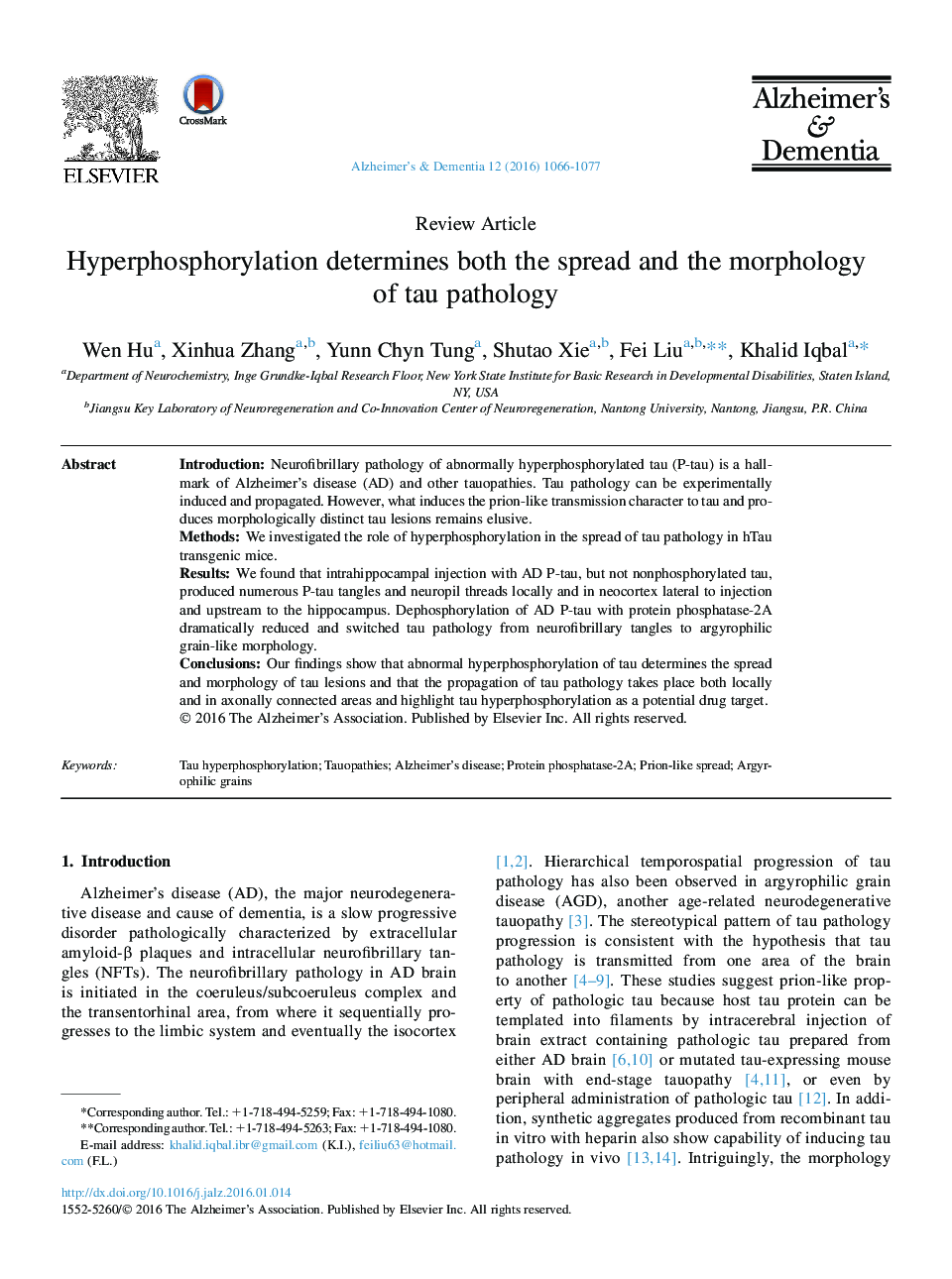| Article ID | Journal | Published Year | Pages | File Type |
|---|---|---|---|---|
| 5623740 | Alzheimer's & Dementia | 2016 | 12 Pages |
IntroductionNeurofibrillary pathology of abnormally hyperphosphorylated tau (P-tau) is a hallmark of Alzheimer's disease (AD) and other tauopathies. Tau pathology can be experimentally induced and propagated. However, what induces the prion-like transmission character to tau and produces morphologically distinct tau lesions remains elusive.MethodsWe investigated the role of hyperphosphorylation in the spread of tau pathology in hTau transgenic mice.ResultsWe found that intrahippocampal injection with AD P-tau, but not nonphosphorylated tau, produced numerous P-tau tangles and neuropil threads locally and in neocortex lateral to injection and upstream to the hippocampus. Dephosphorylation of AD P-tau with protein phosphatase-2A dramatically reduced and switched tau pathology from neurofibrillary tangles to argyrophilic grain-like morphology.ConclusionsOur findings show that abnormal hyperphosphorylation of tau determines the spread and morphology of tau lesions and that the propagation of tau pathology takes place both locally and in axonally connected areas and highlight tau hyperphosphorylation as a potential drug target.
